For those tempted to escape for a while, consider an adventure on the beautiful Greek island of Rhodes, located on the crossroads between Cyprus, Turkey and Egypt and on the eastern shores of the glittering azure waters of the Aegean Sea.
The capital of the Dodecanese islands, Rhodes, was once the site of one of the seven wonders of the ancient world, the Colossus of Rhodes, a bronze statue, which stood 32 metres high, and was later destroyed by an earthquake.
Inhabited since the Neolithic era, many more nationalities including the Persians, Macedonians, Ptolemies, Seleucids, Romans, Venetians and Ottomans have left their cultural influences on the island and it is known that Richard the Lionheart visited Rhodes in 1190AD.
Today, Rhodes is known as the island of knights, and the city of Rhodes, in the north, attracts thousands of visitors captivated by its rich and colourful history and keen to explore Europe’s oldest inhabited medieval town. Fortified by towering walls and gates, this well preserved treasure was declared a UNESCO World Heritage Site in 1988.
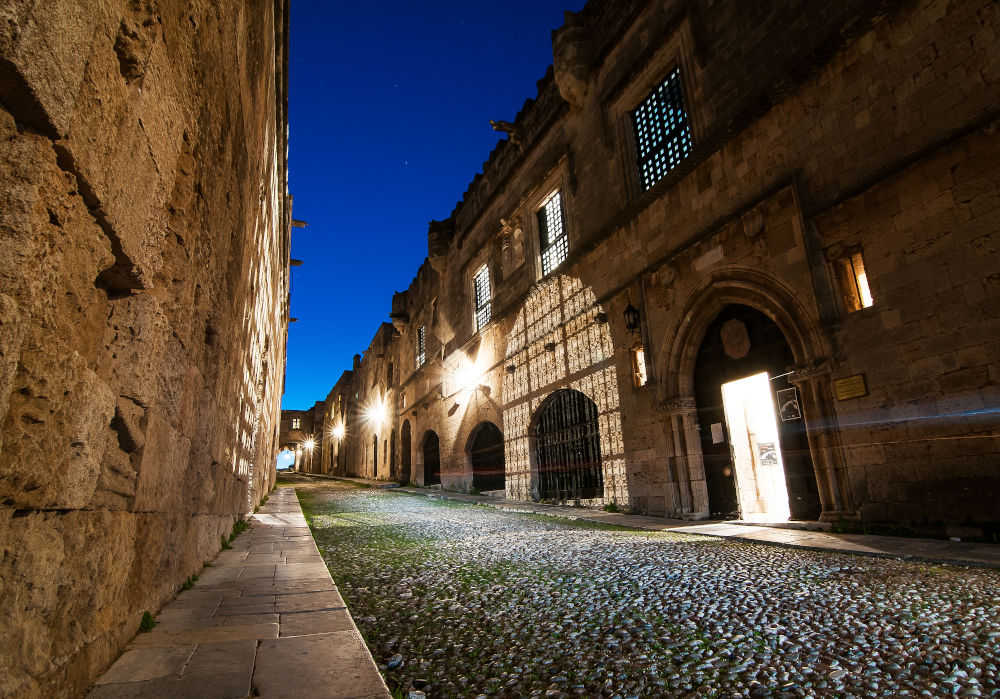
Prior to the Covid 19 pandemic I was fortunate the visit the island and I took a leisurely stroll around the medieval town and noted the unnamed streets and narrow meandering lanes. I was instantly mesmerised and distinctly aware that I was walking in the footsteps of the Knights of St John who ruled the region from 1309 until 1522 and I stopped to admire the imposing medieval buildings, the traditional fountains, the quaint shops crammed with colourful trinkets and the beautifully ornate Byzantine and Gothic churches.
Shortly after, I joined the locals for a spot of lunch and stopped at one of the many busy cafeterias serving Pouggia (a delicious pie filled with greens) and, sipping on a glass of Ouzo, I felt part of the community.
Seeking a stylish place to stay, I checked into the luxurious, Kokkini Porta Rossa, a peaceful boutique hotel, located in the centre of the Old Town and a stone’s throw from the Gate of St. John. Built on the site of a knight’s residence, a small church dedicated to St. John and an armoury, the hotel presents many intriguing touches of a bygone era. At the end of 1522, when the Knights relinquished Rhodes to the Ottomans, a number of Greek, Turkish and Jewish families shared the property, and although it is now a hotel, it has retained the warmth of a home.
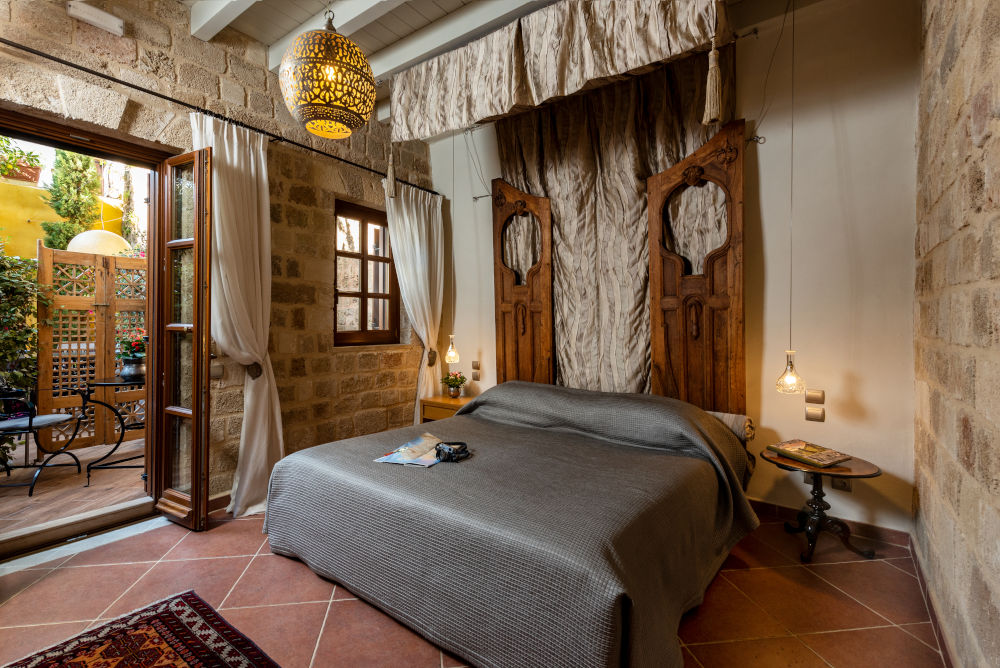
The Kokkini Porta Rossa offers six spacious suites and I was privileged to be allocated the Katina suite, which measures 52 square metres. Features include a sumptuous king double bed swathed in cool, crisp Frette bedding, which ensured a deep slumber following my arduous explorations of the city.
The tranquil and comfortable open-plan sleeping and lounging areas offer intoxicating views of the castle wall, the hotel’s chapel and part of the Old Town. The gorgeous bathroom featured a freestanding tub and a separate walk-in shower with a 40cm rainfall shower head; perfect for invigorating morning ablutions.
Up with the larks, I headed for the hotel’s leafy courtyard where a delicious breakfast was served with aplomb. I devoured my perfectly cooked fluffy omelette and sipping on my piping hot English tea, whilst shaded by a glorious mulberry tree, I made my plans for the day.
For a taste of local history I visited the Palace of the Grand Master, a medieval castle built by the Knights of St John and which once housed the Grand Master of the Order. In the 16th century, when the island fell under the rule of the Ottoman Empire, the palace was used as a command centre and fortress.
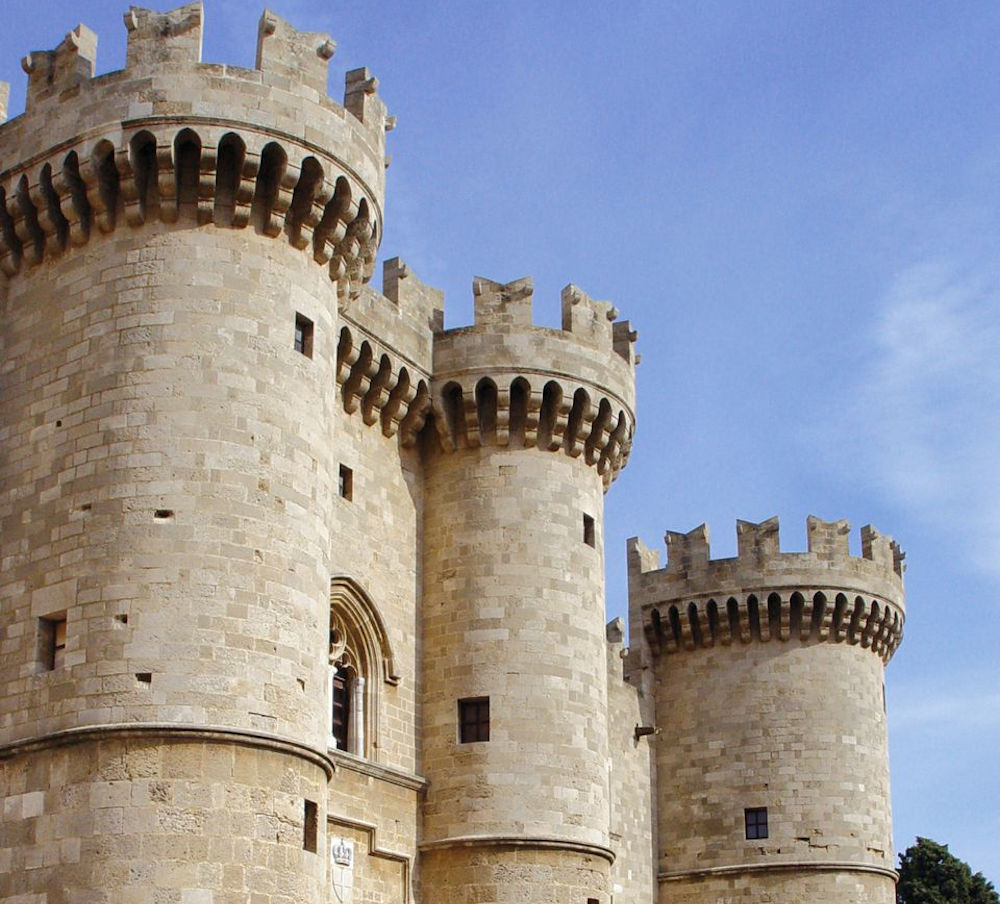
In 1856 several parts of the property were severely damaged by a gunpowder explosion and in 1912, when the Italians took control of the island, the palace became a holiday retreat for Victor Emmanuel III, King of Italy, and later for Mussolini. A plaque bearing his name is prominently displayed at the grand entrance.
I spent an inordinate amount of time at the Archaeological Museum, housed within the Hospital of the Knights, built in 1489. The vast array of exhibits includes vases, figurines, pieces of jewellery and metal dating back to the classical period, fine examples of Roman sculpture and a number of cannon balls that were once fired over the parapets of the palace. There is also an impressive example of Hellenistic mosaic flooring.
Feeling rather peckish, after all that exploration, I headed for Tamam, a well known traditional family owned bistro, a short stroll from the centre of town. The menu featured an extensive choice of both Greek and Turkish dishes and I was tempted by the succulent lamb shank, perfectly accompanied by the house red, and the homemade ice cream was simply delicious.
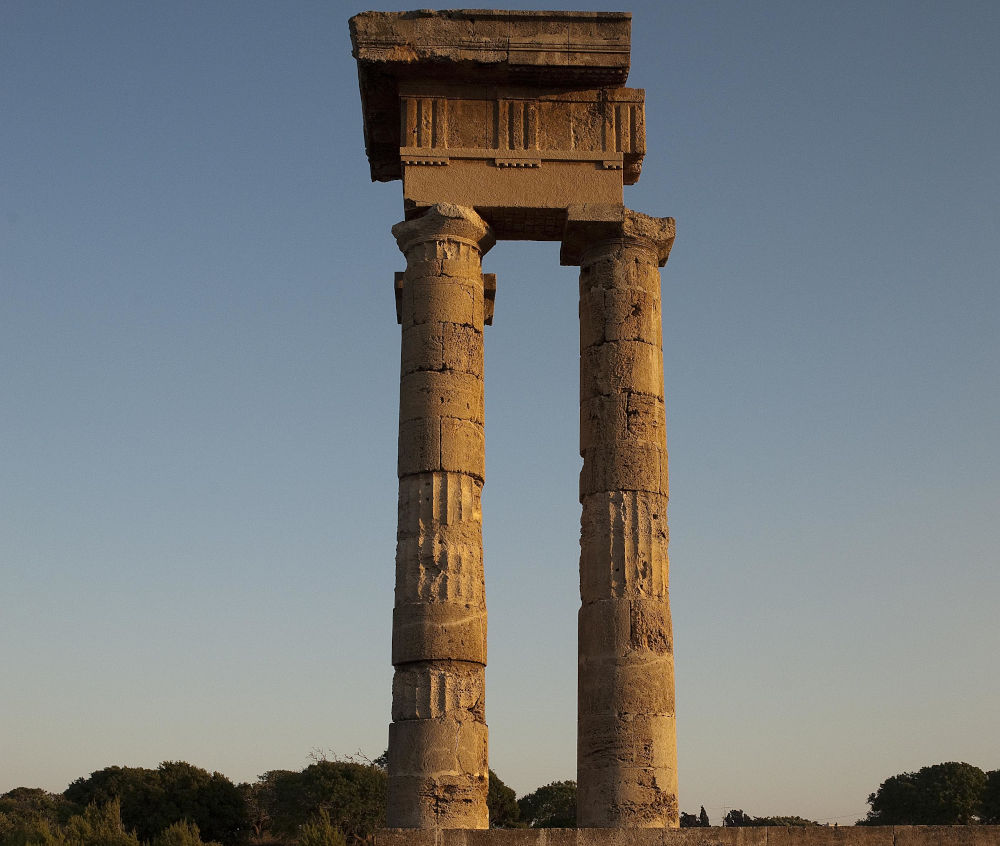
To work off those calories, I made my way to the western edge of the city and there on top of the Ayios Stefanos hill is the unmistakeable view of the unfortified Acropolis of Rhodes, which dates back to 200 BC. Climbing the hill, I entered through the entrance of the medieval castle of the Knights of St John and the Byzantine Chapel of St John and then took a stroll around the ruins, casting my inquisitive eyes over the public buildings, temples and sanctuaries, all built on stepped terraces.
The temple of Pythian Apollo, which stands on a rectangular terrace at the southern end of the site, features spectacular columns and parts of the architrave have been well restored. The Temple of Athena Polias and Zues Polieus feature a columned portico on all four sides and this place is said to be where the citizens of Rhodes kept the texts of their treaties with other states.
For more adventure visitors are welcome to take the boat from Mandraki Harbour to the dazzling white village of Lindos, which is situated in a large bay on the east coast of the island. Be sure to visit the site of the Acropolis of Lindos, a citadel, which was fortified by the Greeks, Romans, Byzantines, the Knights of St John and the Ottomans. Should you be feeling a trifle weary, make your way to the beach for an afternoon snooze on the sands or consider scuba diving, paragliding, windsurfing, jet skiing or water skiing and when you need to rest after all that activity you can catch the return boat to Mandraki Harbour at 6pm.
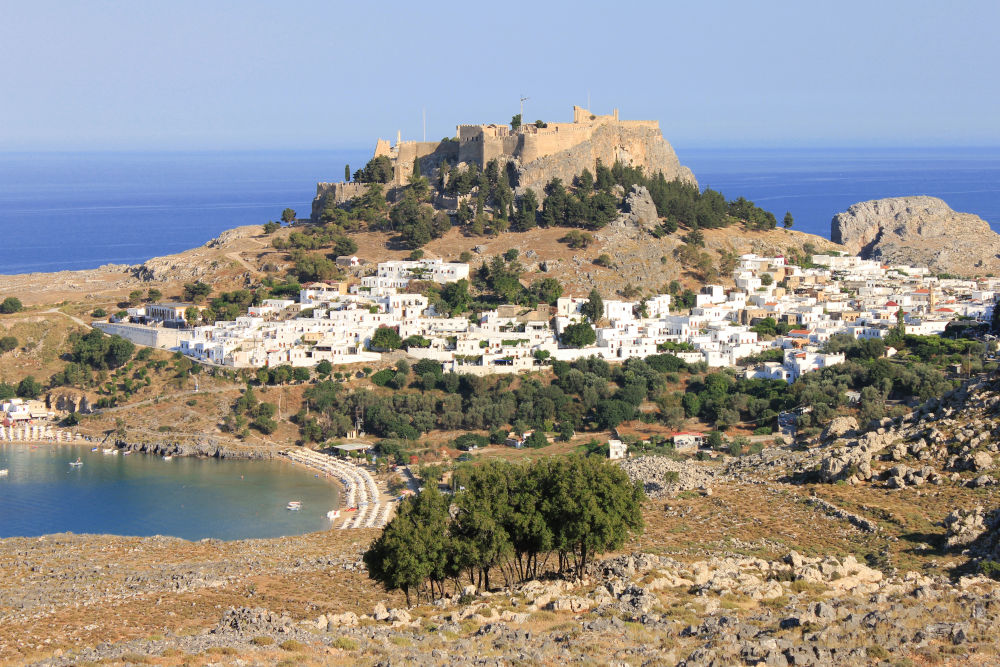
For a rather special dining experience visit Alexis Fish Restaurant on Sokratous Street. This local family run restaurant has continued to attract international celebrities and VIPs since the 1950s. The menu features the most scrumptious dishes including succulent mussels steamed in wine, smoked salmon scallops in white vodka sauce and octopus cooked in ink.
Or, make a reservation at Dinoris, which is housed in a great hall on Museum Square. The property, built in 310AD, was once a hospital and was later converted to a stable in 1530. I sampled the delicious calamari stuffed with soft cheese and I ordered a bottle of Kouros Kourtaki, raised my glass and made a toast to Rhodes, the enchanting island of the Knights of St John.
Factbox
For more information on the featured accommodation visit kokkiniporta.com, and to learn more about this fascinating island go to visitgreece.gr
Images of Rhodes (excluding accommodation) provided with the kind permission of the Greek National Tourism Organisation.






















